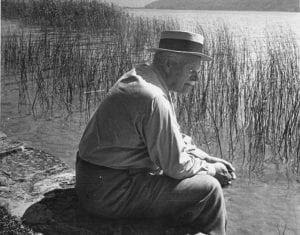All this, however, does not entirely explain the fettered bull.
We have to look at this symbol from still another side.
As we said, this is the creative impulse or the will of the creator, incarnate god in man.
Therefore it is the god in man which is to be the object of worship; it is no longer the transcendent, extramundane god, the god before creation, but the god after creation, having really descended upon earth.
Thus far this idea would be a fulfillment of the Christian conception of the god incarnate in man.
In Christ, according to the Christian dogma, God descended upon the earth, he left his extramundane position and appeared in the flesh, thereby creating an immediate contact between himself and man.
And ever since then, man, through the process of redemption, is supposed to be filled with the divine breath, to really contain the eternal spirit, or the god, the divine breath.
And being filled with the divine pneuma, he has naturally an absolutely different position in the universe; he is no longer a mere inhabitant of the earth, like an
animal that inhabits the sea or the woods, he is now filled with the divine reath and is therefore a god in his own right; he himself can create.
Now we must admit that in the history of the world, as far as we know it, mankind has never produced such an extraordinary civilization as in the last two thousand years; we are in a way immensely far away from the primitive age.
In the two or three thousand years before Christ, the world was close to the primitive age, it was not much farther along than the old prehistoric civilization.
But in the last thousand years, man has swept over the earth and transformed it in many respects; he has done the most amazing things.
So there is a peculiar coincidence between the religion which teaches implicitly that we are divine creators, and an extraordinary creative period in the history of civilization. ~Carl Jung, Visions Seminar, Page 1130


No comments:
Post a Comment